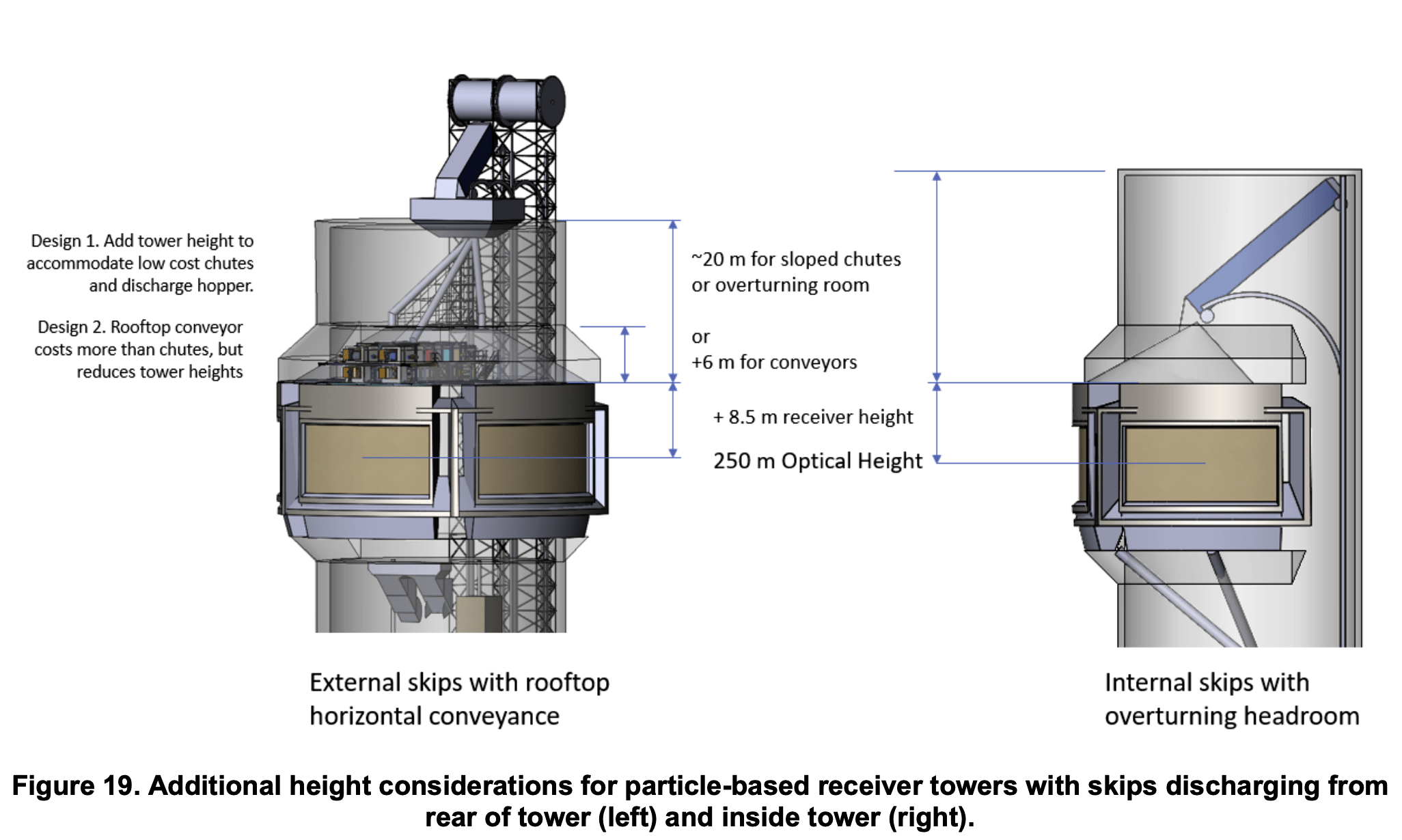
Among the challenges addressed during the particle-based high-temperature solar technology developed at Sandia is that at any one time, almost 3 tons of hot sand would be in free fall for about 5 seconds hitting the pile beneath at 60 meters a second.
The pilot at Sandia will demonstrate its next-generation high-temperature concentrated solar technology that can be used for energy storage, power production, industrial process heat, or solar fuel production.
Press Release
WASHINGTON, D.C. — The U.S. Department of Energy (DOE) celebrated the groundbreaking of its Generation 3 concentrating solar-thermal pilot facility at Sandia National Laboratories. This demonstration is the culmination of a $100 million research effort to develop next-generation concentrating solar-thermal power (CSP) plants and showcase storage technology that could provide one gigawatt of storage for one hour at a single plant. This technology is an important part of achieving the Biden Administration goal of a 100% clean energy economy by 2050.
“Next-generation CSP has the potential to be a game-changer,” said Alejandro Moreno, Acting Assistant Secretary for Energy Efficiency and Renewable Energy. “This pilot facility will demonstrate how CSP systems can meet the challenges of providing long-duration energy storage while reducing costs and complexity for solar thermal technology. At the same time, it also provides a pathway to commercialization for industrial process heat.”
DOE launched its Generation 3 (Gen3) CSP research effort in 2017, challenging the industry to develop and test new technologies to achieve high-temperature plants. The best commercially available technologies, which use mirrors to concentrate sunlight and heat molten salt on top of a tower, can only reach 565°C. DOE’s Gen3 CSP research initiative evaluated all viable pathways to operate a plant that could reach 720°C. Based on research findings, DOE then selected Sandia to develop its technology, which uses sand-like ceramic particles instead of molten salt and can withstand temperatures greater than 800°C. These particles can be used to transfer and store heat or power a supercritical carbon dioxide (sCO2) turbine. If successful, this type of solar power plant could provide 100 megawatts of power continuously, around the clock, at low cost.
Sandia received $25 million to build, test, and operate this facility at the National Solar Thermal Test Facility in Albuquerque, NM. To accelerate deployment and commercialization, Sandia is working with international researchers in Saudi Arabia and Australia to test variants of key system components. The pilot is expected to be completed in 2024 and will prove that a particle-based plant could achieve DOE’s goal of making electricity-plus-storage from CSP even more affordable at 5 cents per kilowatt-hour.
Learn more about DOE’s CSP research.














































